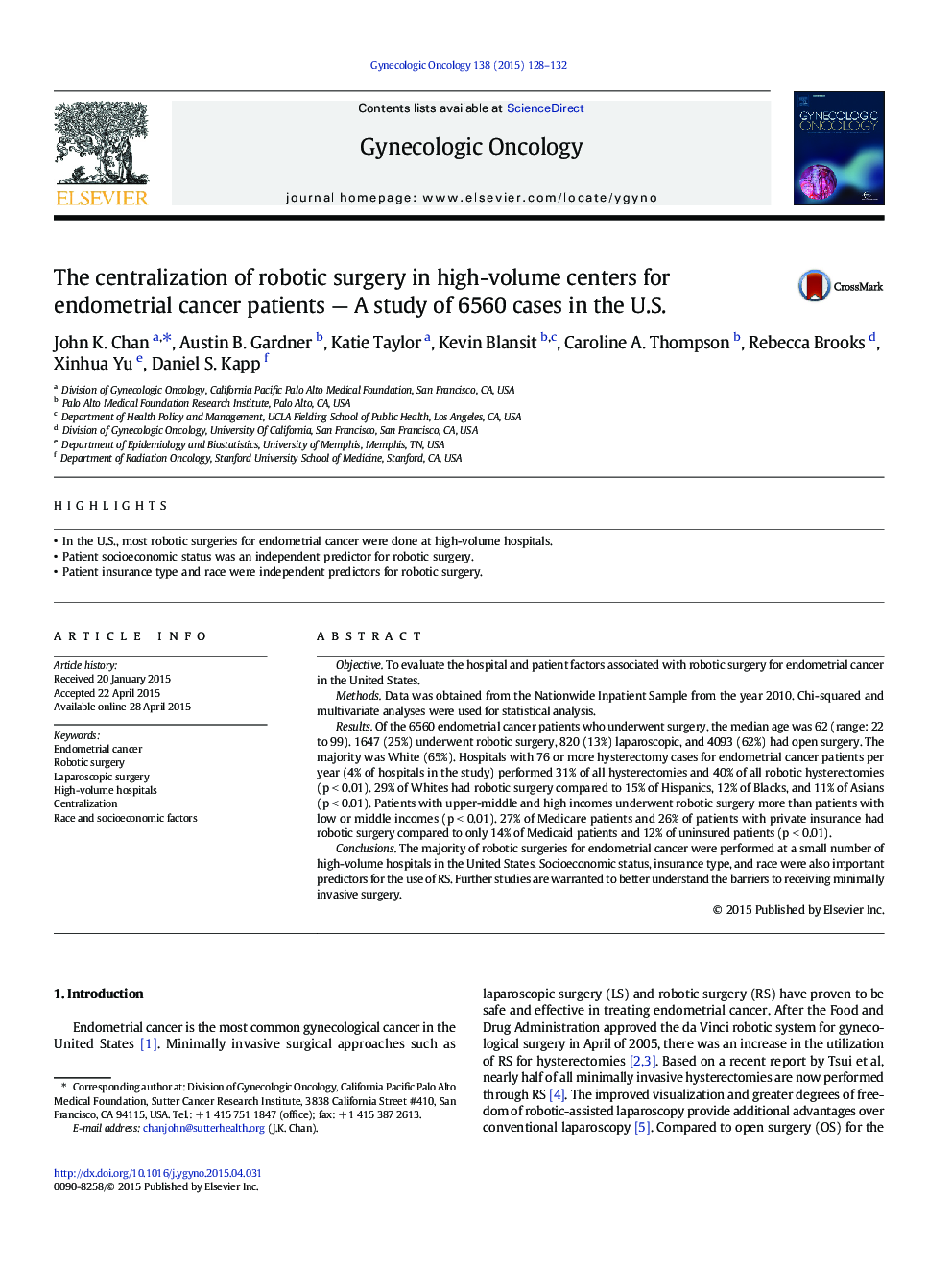| Article ID | Journal | Published Year | Pages | File Type |
|---|---|---|---|---|
| 6182656 | Gynecologic Oncology | 2015 | 5 Pages |
â¢In the U.S., most robotic surgeries for endometrial cancer were done at high-volume hospitals.â¢Patient socioeconomic status was an independent predictor for robotic surgery.â¢Patient insurance type and race were independent predictors for robotic surgery.
ObjectiveTo evaluate the hospital and patient factors associated with robotic surgery for endometrial cancer in the United States.MethodsData was obtained from the Nationwide Inpatient Sample from the year 2010. Chi-squared and multivariate analyses were used for statistical analysis.ResultsOf the 6560 endometrial cancer patients who underwent surgery, the median age was 62 (range: 22 to 99). 1647 (25%) underwent robotic surgery, 820 (13%) laparoscopic, and 4093 (62%) had open surgery. The majority was White (65%). Hospitals with 76 or more hysterectomy cases for endometrial cancer patients per year (4% of hospitals in the study) performed 31% of all hysterectomies and 40% of all robotic hysterectomies (p < 0.01). 29% of Whites had robotic surgery compared to 15% of Hispanics, 12% of Blacks, and 11% of Asians (p < 0.01). Patients with upper-middle and high incomes underwent robotic surgery more than patients with low or middle incomes (p < 0.01). 27% of Medicare patients and 26% of patients with private insurance had robotic surgery compared to only 14% of Medicaid patients and 12% of uninsured patients (p < 0.01).ConclusionsThe majority of robotic surgeries for endometrial cancer were performed at a small number of high-volume hospitals in the United States. Socioeconomic status, insurance type, and race were also important predictors for the use of RS. Further studies are warranted to better understand the barriers to receiving minimally invasive surgery.
